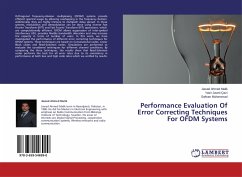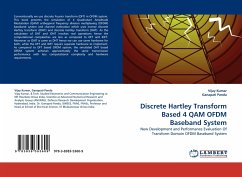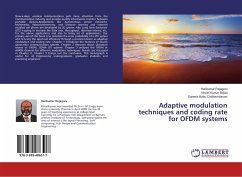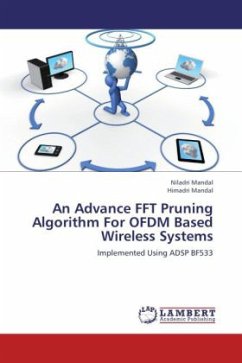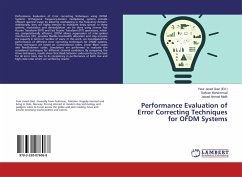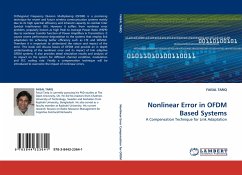
Nonlinear Error in OFDM Based Systems
A Compensation Technique for Link Adaptation
Versandkostenfrei!
Versandfertig in 6-10 Tagen
32,99 €
inkl. MwSt.

PAYBACK Punkte
16 °P sammeln!
Orthogonal Frequency Division Multiplexing (OFDM) is a promising technique for recent and future wireless communication systems mainly due to its high spectral efficiency and inherent capacity to combat Inter Symbol Interference (ISI). However it suffers from nonlinear error problem, popularly known as high Peak to Average Power Ratio (PAPR) due to nonlinear transfer function of Power Amplifiers in Transmitters. It causes severe performance degradation to the systems that employ link adaptation for achieving better efficiency such as LTE and WiMAX. Therefore it is important to understand the n...
Orthogonal Frequency Division Multiplexing (OFDM) is a promising technique for recent and future wireless communication systems mainly due to its high spectral efficiency and inherent capacity to combat Inter Symbol Interference (ISI). However it suffers from nonlinear error problem, popularly known as high Peak to Average Power Ratio (PAPR) due to nonlinear transfer function of Power Amplifiers in Transmitters. It causes severe performance degradation to the systems that employ link adaptation for achieving better efficiency such as LTE and WiMAX. Therefore it is important to understand the nature and impact of the error. This book will discuss basics of OFDM and provide an in depth understanding of the nonlinear error and its impact of link adaptive OFDM systems. It also provides detail simulation results and analysis of its impact on the system for different channel condition, modulation and FEC coding rate. Finally a compensation technique will be introduced to overcome the impact of nonlinear errors.



